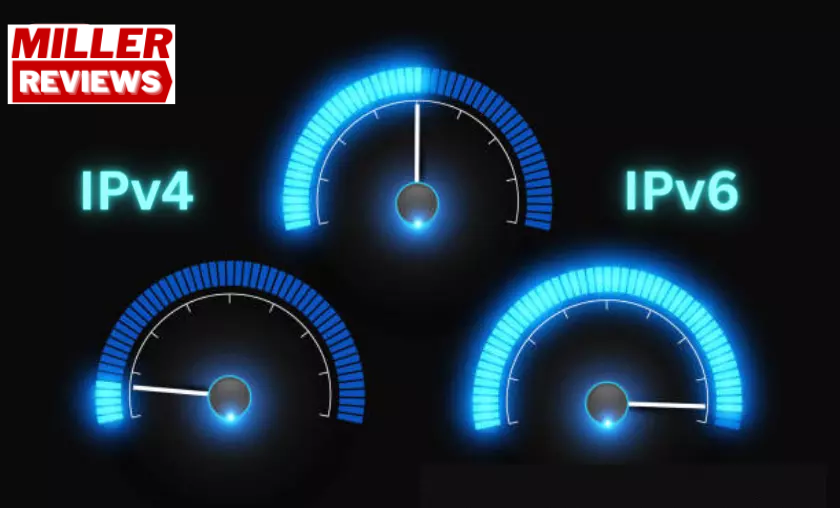IP addresses play a crucial role in facilitating seamless communication between computers and devices across the vast expanse of the internet. The acronym “IP” represents Internet Protocol and including the “v” hints at the existence of different versions of this protocol. IPv4, being the initial stable version, has overshadowed its predecessors such as IPv1, IPv2, and IPv3, rendering them virtually unheard of. As for IPv5, it was explicitly designed to experiment with real-time streaming of voice and video.
Consequently, this version remained confined to experimentation and was never released to the public. Today, we primarily encounter two IP versions: IPv4 and IPv6, each boasting distinct characteristics and functionalities. In this discussion, we shall delve into the contrasting features of IPv4 and IPv6, aiding you in making an informed decision about which suits your needs better. Additionally, we’ll unravel the story behind the elusive IPv5 and its fate.
Table of Contents
What is an IP Address?
A means of differentiation is paramount for the intricate web of computers, routers, and websites to function harmoniously. Enter IP addresses, the fundamental building blocks of the internet. These addresses serve as unique identifiers, like Social Security Numbers (SSNs), linking each computer or network to its distinct digital presence.
When data traverses a network, computers segment it into smaller units called data packets. These packets carry crucial information in their headers, such as the destination IP address, sending IP address, and other pertinent details. Meanwhile, the payload within these packets contains the actual data being transmitted. This segmentation process optimizes the speed and efficiency of data transfer.

IP addresses, composed of binary values, play a vital role in routing all data across the vast expanse of the internet. They serve as the backbone that enables computers to send and receive information during their online interactions. Collaborating seamlessly with the Transmission Control Protocol (TCP), IP addresses ensure that every entity connected to the internet comprehends how and where to direct their traffic, hence the occasional reference to TCP/IP.
The structure of an IP address resembles a series of numbers separated by periods, resulting in a string of four numerical sets. For instance, an IP address might be represented as 182.157.1.28. Each number within these sets falls within the range of 0 to 255. Consequently, the complete IP addressing range spans from 0.0.0.0 to 255.255.255.255, encapsulating the vast realm of digital communication.
What is IPv4?
IPv4, the widely adopted Internet Protocol version 4, is significant online. Its journey began with its implementation on SATNET in 1982, followed by its deployment on the ARPANET in January 1983.
Playing a dual role, IPv4 serves as the backbone for device identification through IP addresses and establishing rules governing the transmission of data packets between these devices. As a connectionless protocol, it diligently delivers packages to their intended destinations.

The structure of an IPv4 address takes the form of four decimal numbers, separated by three dots, each falling within the range of 0 to 255. For example:
100.101.102.103
There are approximately 4.3 billion unique IPv4 addresses in this decimal format, as only 232 hosts can be accommodated.
Nevertheless, certain sizeable address blocks are reserved for private networks and remain inaccessible for public utilization. The continual growth of the internet has resulted in the eventual depletion of unused IPv4 addresses, as every device, be it computers, smartphones, or gaming consoles, requires an address to connect. Despite this impending scarcity, IPv4 remains prevalent and dominates nearly 95% of internet traffic, surpassing its counterpart, IPv6.
What is IPv6?
IPv6, also known as Internet Protocol version 6, emerged through the Internet Engineering Task Force (IETF) efforts and was introduced in December 1995. The IETF diligently worked on developing the technical standards necessary to address the imminent issue of IPv4 address exhaustion. As the latest iteration of the internet protocol, IPv6 operates like IPv4.

In the past decade, there has been an exponential surge in the number of internet-connected devices. With this escalating device count, the demand for IP addresses has soared, necessitating a solution. Each device connected to the internet requires a unique IP address to facilitate identification and establish its location. IPv6 tackles this challenge by offering a seemingly limitless supply of lessons to cater to the ever-growing global network landscape, thus alleviating the issue of IP address exhaustion.
IPv6 employs a 128-bit addressing scheme, enabling a staggering 340 trillion trillion trillion (that’s triple trillion!) devices to possess their distinct addresses. Address representation in IPv6 involves grouping the digits into eight sections, separated by colons, each containing four hexadecimal digits. While IPv4 relies on numeric addressing, IPv6 introduces alphanumeric representations. Each team can assume values ranging from 0 to FFFF, employing numerical (0-9) and alphabetical (A-F) characters. For instance, a complete IPv6 address could appear as:
1234:ABCD:1234:ABCD:1234:ABCD:1234:ABCD
To enhance clarity and avoid confusion, techniques are available to shorten the length of an IPv6 address. This streamlined format improves performance, allows for auto-configuration, and eliminates the need for Network Address Translation (NAT). Furthermore, IPv6 prioritizes security, offering enhanced protection compared to its predecessor, IPv4.
What Happened to IPv5?
In the ongoing discourse surrounding IPv4 versus IPv6, the absence of IPv5 often sparks curiosity. Many wonder if IPv5 ever truly existed and, if so, what became of it. The reasons behind its seemingly overlooked status warrant a dive into internet history.
During the late 1970s, a protocol known as Internet Stream Protocol (ST) emerged for experimental purposes, facilitating the transmission of voice, video, and distributed simulation. Interestingly, this protocol initially carried the name IPv5, denoting its position as the fifth iteration of the Internet Protocol.

IPv5 exhibited notable proficiency in transmitting data packets across specific frequencies. However, it has yet to achieve official status as an IP protocol. Instead, more giant corporations such as Apple, NeXT, and Sun Microsystems employed IPv5 experimentally, leveraging its capabilities to ensure efficient network services.
Before the advent of IPv5, IPv4 reigned supreme. IPv5 adopted the same addressing system as its predecessor, utilizing a 32-bit structure. Each address comprised four numbers ranging from 0 to 255, separated by dots. Regrettably, this addressing scheme imposed a limitation of only 4.3 billion addresses.
Given the limited number of addresses, IPv4 faced the challenge of exhaustion as more companies and individuals rapidly embraced global internet access. Since IPv5 also employed 32-bit addressing, these companies anticipated a similar constraint on address generation, ultimately dissuading them from adopting it as a standardized protocol.
The decision of major tech companies to abandon IPv5 cast a shadow over its prospects, discouraging wider adoption. Consequently, IPv5’s promising trajectory came to an abrupt halt, failing to secure its place as the following IP protocol. However, IPv6 emerged as the subsequent development, inheriting some of IPv5’s promising features while paving the way for the widely-used voice-over-IP technology we rely on today. Despite the following introduction of IPv6, IPv5 remains conspicuously absent from existence, with IPv4 continuing to dominate the market.
Difference Between IPv4 vs IPv6:

IPv4 and IPv6 have established themselves as prominent contenders in the market, each with its own merits. However, it’s crucial to recognize the technical disparities between these two protocol versions. In the forthcoming sections, we will explore the significant differences that set IPv4 and IPv6 apart. Specifically, we will delve deeper into two critical aspects: speed and security, providing valuable insights into how these protocols diverge in these domains.
Key Differences:
- IPv4, the Internet Protocol’s fourth version, was published in 1981. In contrast, IPv6 represented the latest iteration and became a draft standard in 1998, eventually attaining the status of an Internet Standard in 2017.
- The most notable distinction between IPv4 and IPv6 lies in the address length. IPv4 addresses are 32-bit, whereas IPv6 addresses are significantly longer at 128-bit.
- IPv4 can generate a maximum of around 4.29 billion unique addresses, while IPv6 boasts an astonishing capacity to generate up to 3.4 x 10^38 addresses.
- Address representation also varies between the two protocols. IPv4 adopts four decimal numbers separated by dots, while IPv6 employs hexadecimal digits separated by colons.
- Regarding addressing methods, IPv4 relies on numeric values, while IPv6 incorporates alphanumeric representations.
- Compared to IPv4, IPv6 features packet headers that are twice as large.
- IPv4 packets utilize 12 headers, whereas IPv6 reduces this number to 8 titles.
- IPv6 incorporates packet flow identification within its header, whereas IPv4 lacks such packet flow information.
- IPv6 benefits from a built-in network security layer known as IPsec and offers Quality of Service (quality of service) capabilities, which are absent in IPv4.
- IPv6 eliminates the need for Network Address Translation (NAT), a feature still required by IPv4.
- IPv4 lacks end-to-end connection integrity, while IPv6 ensures this crucial connectivity aspect.
- IPv4 uses Address Resolution Protocol (ARP) to map MAC addresses, whereas IPv6 utilizes Neighbor Discovery Protocol (NDP).
- IPv4 supports Virtual Length Subnet Mask (VLSM), whereas IPv6 lacks support for VLSM.
- Dynamic Host Configuration Protocol (DHCP) is employed for address setup in IPv4, while IPv6 incorporates address renumbering functionality.
- Broadcasting is supported exclusively by IPv4, while IPv6 does not offer this feature.
- IPv6 eliminates the checksum field present in IPv4.
- Multicasting is integral to IPv6’s base specifications, whereas it remains optional in IPv4.
IPv4 vs IPv6 – Speed:
While there is a perception that IPv6 may offer faster speeds than IPv4, the actual difference in most cases amounts to mere milliseconds, making it virtually invisible to users. Security service provider Sucuri conducted comprehensive tests on websites supporting IPv4 and IPv6 and found that both protocols exhibited similar speeds for direct connections.

Nevertheless, there is evidence suggesting that IPv6 offers faster performance. Akamai, for example, conducted tests on a single URL using an iPhone on a mobile network and observed that the site’s median load time was 5% faster with IPv6 than with IPv4. Facebook’s Engineering team also noted that accessing their platform over IPv6 could be 10-15% faster than using IPv4.
The slight speed advantage of IPv6 stems from the fact that IPv6 connections can directly access the network. In contrast, IPv4 requires traversal through stateful NAT servers to navigate the web despite having smaller packet headers. IPv6, on the other hand, can transmit data directly between devices, simply verifying that the data was transmitted accurately. In contrast, IPv4 necessitates error checking at multiple levels to ensure the integrity and accuracy of the data when transferring it to the receiving device.
Therefore, in terms of speed, IPv6 does hold a slight edge. However, it’s worth noting that IPv6 also has larger packet headers, potentially resulting in slower performance in certain use cases.
IPv4 vs IPv6 – Security:
The disparity in security between IPv4 and IPv6 could be more pronounced. IP Security (IPSec), a suite of security protocols developed by the Internet Engineering Task Force (IETF) for authentication, data integrity, and overall security, is fully integrated into IPv6. However, it’s worth noting that IPv4 has undergone significant updates over the years, and IPSec is now available for IPv4 as well. Therefore, an IPv4 network can be as secure as an IPv6 network with proper configuration. The responsibility for ensuring security lies with network providers and end-users alike.

IPv6 introduces two security headers that can be utilized independently or in tandem: the Authentication Header (AH) and the Encapsulating Security Payload (ESP). The Authentication Header provides data-origin authentication and safeguards against replay attacks. On the other hand, the Encapsulating Security Payload offers connectionless integrity, data origin authentication, protection against replay attacks, limited traffic flow confidentiality, and enhanced privacy and confidentiality through payload encryption.
Another notable security advantage of IPv6 is its ability to implement end-to-end encryption and integrity checking, making it more challenging for malicious actors to execute man-in-the-middle (MitM) attacks.
Furthermore, IPv6 incorporates the Secure Neighbor Discovery (SEND) protocol, which enhances the security of name resolution. This makes it more difficult for attackers to redirect traffic between legitimate hosts and eavesdrop on or manipulate their communication.
While IPv6 may introduce improved security solutions compared to IPv4, the effectiveness of these security features ultimately depends on the proper design and implementation of IPv6. It is also crucial to activate firewall protection, utilize access control systems, and employ reliable antivirus software to bolster overall network security.
IPv4 vs. IPv6: Which One Is Better?
Just as each physical house has a unique number in its address, every device connected to the internet is assigned an IP address. This addressing system enables devices to communicate and ensures data reaches its intended destination. Astonishingly, reports indicate that approximately 127 new devices connect to the internet every second. With this rapid influx of devices, the demand for IP addresses is skyrocketing.
However, IPv4, the current standard, has a theoretical limit of 4.3 billion addresses, and the availability of IPv4 addresses is dwindling. Even RIPE NCC, one of the Regional Internet Registries (RIRs), has officially announced the exhaustion of its IPv4 addresses. This scarcity poses significant challenges for existing network operators, who will face increasing difficulties and costs when seeking additional IPv4 addresses to expand their networks.

As the prices of IPv4 addresses are driven by supply and demand, obtaining them becomes increasingly arduous. Thus, we need an alternative solution, and that alternative is IPv6.
IPv6 employs a 128-bit address format, providing a staggering 1,028 times more unique addresses than IPv4. It enables devices to belong to multiple networks simultaneously, each with its address, and facilitates the combination of numerous enterprise networks without needing readdressing. By eliminating the Network Address Translation (NAT) requirement, which was designed as a workaround to conserve IPv4 addresses, IPv6 allows for end-to-end connectivity at the IP layer.
This transition paves the way for new and valuable services, making creating and maintaining peer-to-peer networks easier and enhancing the robustness of services like VoIP and Quality of Service (quality of service).
IPv6 boasts numerous advantages over its predecessor and should be the preferred choice for almost all organizations. Its superior performance, efficiency, and effectiveness make it the most advanced version to date, aligning with and fulfilling the goals and objectives of companies. Importantly, IPv6 streamlines routing by reducing the size of routing tables, making the process more efficient and forward-thinking. As a result, many organizations are increasingly adopting IPv6 due to its outstanding performance.
The good news is that the transition to IPv6 is already underway. Google reports that worldwide adoption of IPv6 currently stands at an impressive 37%. As more internet service providers (ISPs), mobile carriers, and large enterprises migrate to IPv6, the number of websites supporting IPv6 and users upgrading their software to accommodate IPv6 is also rising.
While the migration from IPv4 to IPv6 may progress gradually, network operators must implement IPv6 sooner rather than later, considering the long-term growth of networks.
Do You Need to Switch from IPv4 to IPv6 Right Away?
The answer is a resounding “No.” Switching from IPv4 to IPv6 immediately is not advisable because many websites currently need to support IPv6. Even notable platforms like Google Cloud do not offer full IPv6 support at this time. However, IPv6 support is part of Google Cloud’s roadmap, so this situation may change. Nonetheless, a complete and permanent migration to IPv6 will undoubtedly take several decades to accomplish.
To utilize IPv6, specific requirements must be met, including an IPv6-compatible operating system, a router with IPv6 support, and an Internet Service Provider (ISP) with IPv6 enabled. Fortunately, many modern desktop operating systems now support IPv6, but it is important to note that not all do. If you decide to switch to IPv6, you must purchase a new router and ensure that it meets the specifications for IPv6 compatibility.
The debate between IPv4 and IPv6 often centers around which is superior, but it depends on your specific needs. Throughout this article, we have discussed the characteristics of IPv4 and IPv6, providing you with the information necessary to determine which protocol best aligns with your requirements.
Conclusion
Understanding the differences between IPv4 and IPv6 is crucial in staying ahead in the internet age. By exploring the concepts of IP addresses, IPv4, and IPv6, we can gain a comprehensive understanding of the evolving landscape of internet connectivity. While IPv5 may have been a fleeting development, the transition from IPv4 to IPv6 is a significant milestone that brings notable advantages. IPv6 offers improved scalability, larger address space, and enhanced security features compared to its predecessor.
Although the switch from IPv4 to IPv6 may not be an immediate necessity for everyone, it is essential to prepare for the future as IPv6 becomes increasingly adopted. Ultimately, the choice between IPv4 and IPv6 depends on various factors, including speed, security, and the specific needs of each user. Staying informed and adaptable will ensure that you remain ahead in the ever-evolving internet age.
For More amazing articles related to Tech Check out our website Over Here
To Read more similar articles click here
Thanks for visiting our Website. If you appreciate our work, kindly show us some support in our comments section 🙂